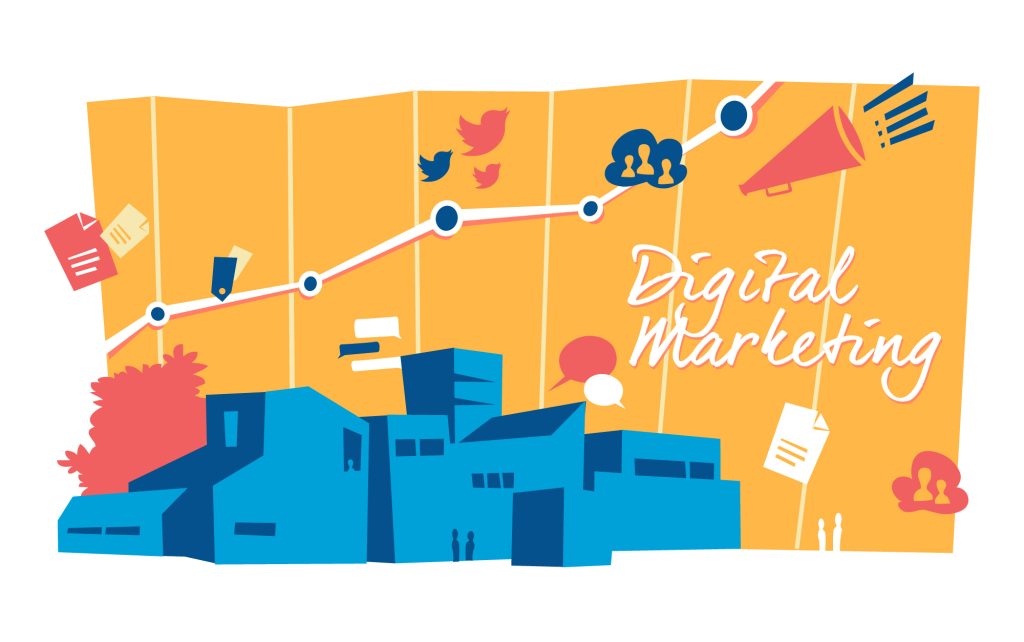SMART Goals in Digital Marketing
In the dynamic landscape of digital marketing, establishing clear and effective objectives is paramount for success. One of the most effective frameworks for creating such objectives is the SMART goals methodology. The acronym SMART stands for Specific, Measurable, Achievable, Relevant, and Time-bound. Each component plays a critical role in planning and executing digital marketing strategies that yield successful outcomes.
The fast-paced nature of digital marketing often presents challenges that require marketers to be agile and focused. Without well-defined goals, marketers may easily become overwhelmed by endless data and trends, leading to inefficient use of resources. By employing the SMART criteria, marketers can transform vague intentions into concrete actions, allowing for more streamlined and effective strategies. For instance, rather than setting a broad goal to “increase website traffic,” a SMART goal would specify, “increase website traffic by 20% within the next quarter through targeted social media campaigns.” This approach clarifies the objective and sets a clear expectation of outcomes.
Moreover, SMART goals facilitate better measurement and evaluation of marketing efforts. By incorporating measurable metrics, marketers can assess whether their strategies are effective or require adjustments. This adaptability is essential in a realm where consumer behavior and digital landscapes are consistently evolving. SMART goals not only enhance clarity but also align marketing initiatives with broader business objectives, ensuring that every campaign contributes meaningfully to overall performance.
In essence, integrating SMART goals into digital marketing activities empowers marketers to create focused, results-oriented strategies. By clearly specifying what is to be achieved, establishing how success will be measured, and setting realistic timelines, digital marketers can navigate the complexities of their field more efficiently and achieve desirable outcomes.

SMART Goals
Breaking Down the SMART Framework
The SMART framework is an essential tool in digital marketing, allowing marketers to set goals that can drive measurable success. The acronym SMART stands for Specific, Measurable, Achievable, Relevant, and Time-bound. Each component plays a crucial role in the effective goal-setting process.
Firstly, the “Specific” element requires that goals are clearly defined without ambiguity. A vague goal such as “increase website traffic” is less effective than stating “increase website traffic by 20% through targeted SEO strategies.” This specificity enables marketers to understand precisely what needs to be accomplished.
Next, we move to “Measurable.” Goals should include criteria for measuring progress and success. This could involve metrics like page views, conversion rates, or social media engagements. For example, a goal might aim for “gaining 500 new email subscribers through a lead magnet,” allowing marketers to track their successes quantitatively.
The third component, “Achievable,” focuses on setting realistic goals that are attainable given the resources and constraints available. A goal to “increase organic traffic by 200% in one month” may be deemed unrealistic for a startup, whereas “boosting organic traffic by 25% over three months” is more feasible.
“Relevant” ensures that the goals align with broader business objectives and are pertinent to the overall growth strategy of the company. For instance, a digital marketing team might establish the goal of “increasing social media engagement to enhance brand awareness,” which directly supports their overarching marketing efforts.
Lastly, “Time-bound” emphasizes the importance of deadlines. Each goal should have a defined timeline for completion to foster a sense of urgency and accountability. An example could be: “Achieve a 20% increase in website traffic within three months.” This time-bound approach aids in prioritizing tasks and maintaining focus on achieving results.
The Importance of Specificity in Goal Setting
In the realm of digital marketing, the specificity of goals serves as a cornerstone for achieving success. When marketers articulate specific goals, they create a clear roadmap for their activities, ensuring all team members have aligned expectations and a shared understanding of the objectives. Vague goals can lead to miscommunication and wasted resources, making specificity essential for driving results and maintaining focus on business objectives.
For instance, instead of stating a general goal like “increase web traffic,” a more specific goal would be “increase monthly web traffic by 20% in the next three months through targeted social media advertising.” This precise target not only clarifies what needs to be achieved but also sets a defined timeline and measurement criteria, enabling teams to monitor progress effectively.
Moreover, specificity in goal setting allows for more tailored marketing strategies. By having a clear target audience, marketers can customize their campaigns to meet the unique needs and preferences of that segment. For example, a digital marketing campaign aimed at boosting email newsletter sign-ups might specify a goal of “gaining 500 new subscribers from the 25-34 age group within four weeks.” This level of detail allows marketers to concentrate their efforts on channels and messages that resonate with that demographic, ultimately yielding better results.
Real-world examples illustrate the impact of specific goal setting. A notable case is that of a brand that aimed to enhance its social media presence. Instead of opting for a broad goal of “improving engagement,” it set out to “increase Instagram post engagement by 15% over the next two months by implementing a user-generated content campaign.” This approach not only clarified the objective but also fostered creative ideas for execution aligned with the campaign’s intent.
In summary, specificity is paramount in digital marketing goal setting, enabling teams to avoid ambiguity, align their efforts with overarching business objectives, and create more effective strategies tailored to their target audience.
Measurable Goals: Tracking Progress and Success
In the realm of digital marketing, the establishment of measurable goals is paramount for effective strategy implementation and assessment. Measurable goals enable marketers to define specific metrics that quantifiably convey the success of their marketing initiatives. By establishing these parameters, organizations can create a framework that fosters accountability and drives performance improvements.
Common metrics used in digital marketing include key performance indicators (KPIs) such as conversion rates, click-through rates, and engagement levels. For instance, the conversion rate is instrumental in measuring the percentage of users who complete a desired action on a website, thus providing insights into the effectiveness of marketing campaigns. Similarly, tracking click-through rates allows marketers to assess how well their content resonates with the audience by indicating the level of interest generated by advertisements or email campaigns.
Furthermore, engagement metrics, such as social media shares, likes, and comments, serve as valuable indicators of content effectiveness. They provide direct feedback on the audience’s response, enabling marketers to adapt their strategies in real-time. The ability to monitor these metrics ensures that digital marketing efforts align with business objectives while facilitating timely interventions when performance deviates from expectations.
The significance of measurable goals extends beyond mere tracking; they also play a vital role in guiding strategic decision-making. By analyzing the data obtained from these KPIs, marketers can identify trends and patterns that inform future initiatives. This data-driven approach fosters continuous improvement and optimization of marketing strategies, ensuring that resources are allocated effectively to achieve desired outcomes.
In conclusion, setting measurable goals within the digital marketing framework is essential for tracking progress and determining success. By leveraging various metrics and KPIs, marketers can not only evaluate their strategies but also make informed adjustments that enhance overall performance in the digital landscape.
Achievable Objectives: Setting Realistic Targets
Setting achievable objectives is a fundamental aspect of the SMART goals framework, crucial for successful digital marketing activities. Achievable goals ensure that organizations remain motivated and focused, preventing the potential burnout that can arise from unrealistic expectations. To establish objectives that are truly attainable, it is essential to evaluate several factors, including available resources, existing skills within the team, and prevailing market conditions.
First and foremost, assessing the available resources is critical in determining whether a goal can be achieved. Resources may encompass financial investment, human capital, technological tools, and time. For example, if a company sets a goal to double its online sales within a month but lacks sufficient staff or marketing budget, this goal may lead to frustration and decreased morale. Instead, organizations might opt to set a more gradual objective that allows for necessary investment and scaling.
In addition to resources, the skills of the team must be taken into account when establishing achievable goals. Every team possesses a unique set of skills, and recognizing these strengths can inform more realistic objectives. If the team excels in content creation but lacks expertise in search engine optimization (SEO), a goal centered on improving organic search rankings may require further training or hiring additional specialists to achieve effectively.
Another crucial element is to conduct market analysis to ensure that the objectives align with industry trends and competitive benchmarks. Evaluating market conditions enables teams to set realistic targets based on historical performance data and customer feedback. By analyzing these factors and adjusting goals accordingly, businesses can cultivate a more sustainable approach to their digital marketing strategies.
Ultimately, establishing achievable objectives helps cultivate a culture of success within an organization. By setting realistic targets, businesses can maintain motivation and ensure that their digital marketing efforts translate into meaningful outcomes.
Aligning with Business Objectives: The Relevance Factor
In the realm of digital marketing, the relevance of goals is paramount. The ‘Relevant’ dimension of SMART goals emphasizes the necessity for marketing objectives to align closely with broader business strategies. When marketing initiatives are directly connected to overarching business goals, organizations can ensure that their efforts contribute meaningfully to company growth and success.
Establishing relevance involves understanding the specific needs and priorities of the business. For instance, if a company’s strategic direction focuses on expanding into new markets, marketing goals should be tailored to support this initiative. This might include developing targeted campaigns aimed at attracting clientele in those emerging regions. Additionally, aligning marketing activities with business objectives can enhance resource allocation, permitting companies to direct effort and budget towards initiatives that foster growth and sustainable practices.
Furthermore, the evaluation of relevance goes beyond immediate goals to encompass long-term strategic plans. In the fast-evolving landscape of digital marketing, it is critical to adopt an adaptable approach while remaining steadfastly linked to the organization’s vision. This ensures that as circumstances change, marketing objectives can pivot while still maintaining alignment with business goals.
The process of creating relevant marketing objectives is iterative. It requires regular reviews and adjustments to ensure alignment with shifts in the business environment, competition, and market dynamics. By continuously assessing the relevance of their goals, businesses can position themselves to respond proactively to challenges and opportunities alike, ultimately leading to enhanced marketing effectiveness and measurable outcomes.
In summary, aligning marketing goals with broader business objectives not only amplifies the impact of digital marketing activities but also fosters a culture of cohesion and purpose, driving both immediate and long-term success for the organization.
The Role of Timelines: Creating Time-bound Goals
Setting time-bound goals is a crucial component of the SMART framework, particularly in the fast-paced domain of digital marketing. The ‘Time-bound’ aspect ensures that each objective is anchored by a specific deadline, which inherently promotes a sense of urgency and focus within teams. In a field characterized by rapid shifts in technology and consumer behavior, deadlines serve as essential parameters that guide both strategy development and implementation.
One significant benefit of creating specific timelines is that they provide clear expectations for all stakeholders involved. When team members understand the timeframe allocated for each milestone, they are more likely to align their efforts toward reaching the goal. This alignment fosters communication and collaboration, which are pivotal in dynamic marketing environments. Additionally, having a deadline helps in prioritizing tasks, allowing digital marketers to allocate resources efficiently and manage their time effectively.
Moreover, time-bound goals offer opportunities for assessing progress. By breaking down a comprehensive marketing goal into smaller, time-specific objectives, marketers can monitor their performance at regular intervals. This practice not only aids in identifying areas for improvement but also facilitates course corrections as necessary. It allows teams to react promptly to emerging trends and shifts in audience engagement, ensuring that the marketing strategy remains relevant and effective.
To create effective timelines, it is essential to consider the overall marketing calendar, potential obstacles, and resource availability. Use project management tools to visualize these timelines, making adjustments when unexpected events occur. Furthermore, communicate these timelines clearly to the entire team, so everyone is aware of their responsibilities and the urgency attached to them. In conclusion, incorporating well-defined timelines into your digital marketing goals enhances focus and accountability, ultimately leading to successful outcomes.


